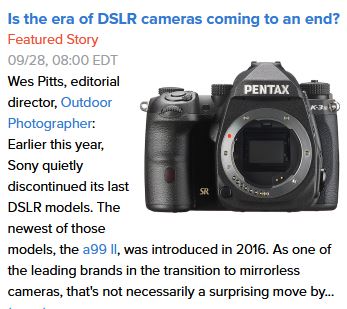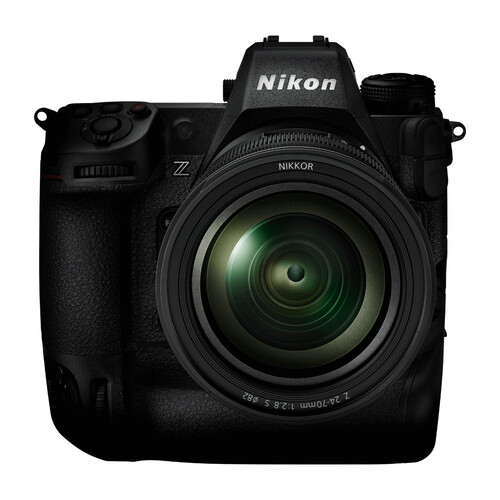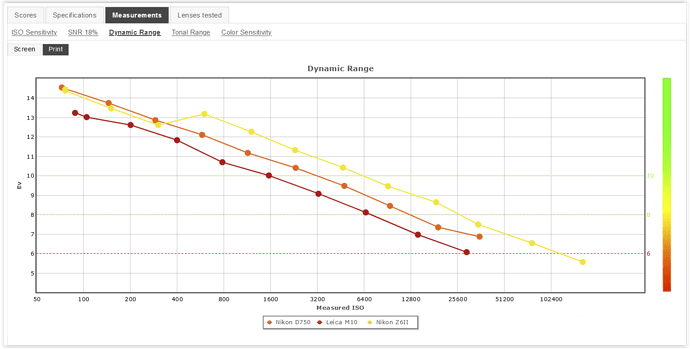Until this morning, I would never have been starting this thread. To my way of thinking, on cameras based on the 35mm format, there were really two types of cameras, rangefinder cameras, and SLR/DSLR cameras. There are so many things that are greatly influenced by this choice - composition, metering, finding the best exposure for an image to be processed by PhotoLab, and more. Then there is the consideration that PhotoLab “knows” enough about these cameras, and presumably many lenses used on them to help the user create the best image.
Until this morning, I ignored “digital” viewfinders, thinking that any serious camera would have an optical viewfinder, and the optical viewfinder is the only/best way for the photographer’s eye to work with the camera. Then I found this video from KEH Cameras:
https://www.youtube.com/watch?v=31n0NJiFcvM
It’s not a commercial “sales” video, it is two people comparing the advantages and disadvantages between optical (Nikon D850) and a current Nikon Z camera (about to be updated by a Z9).
All of a sudden I’m not sure what I want to look forward to for the future. Several people here, Joanna in particular, are showing me the best way to use a Nikon DSLR with PL4, and helping me get the best out of my Leica rangefinder camera.
My question, mostly for Joanna, is how this transformation to “Mirrorless” may or may not result in a change in how we use PhotoLab.
(If I did want to buy a more powerful Nikon, one of the first things I need to do is evaluate how a DSLR or a Mirrorless will be my best choice. They said digital would never get as good as film, but that has happened. From this video, it seems that Mirrorless has now passed the DSLR in so many ways.)
(…and I might be wrong in thinking that my eyes see better with an Optical viewfinder than a Digital viewfinder. Leica’s tools for their Visoflex viewfinder for a Leica M10 make it easier to focus manual-focus lenses on my Leica, than on my optical viewfinder Nikon DSLR with manual focus lenses. Nikon’s auto-focus lenses make up for that, when I’m using one of them. Having a digital viewfinder is what allows my Visoflex to do this, enlarging an image while I’m focusing, and highlighting edges in red when the focus is correct.)




 (saves battery too.)
(saves battery too.) As to handwriting, mine is so dreadful, over forty years ago I attended a summer school of theology and took copious notes, only to find a week later, I couldn’t even read most of them
As to handwriting, mine is so dreadful, over forty years ago I attended a summer school of theology and took copious notes, only to find a week later, I couldn’t even read most of them 



